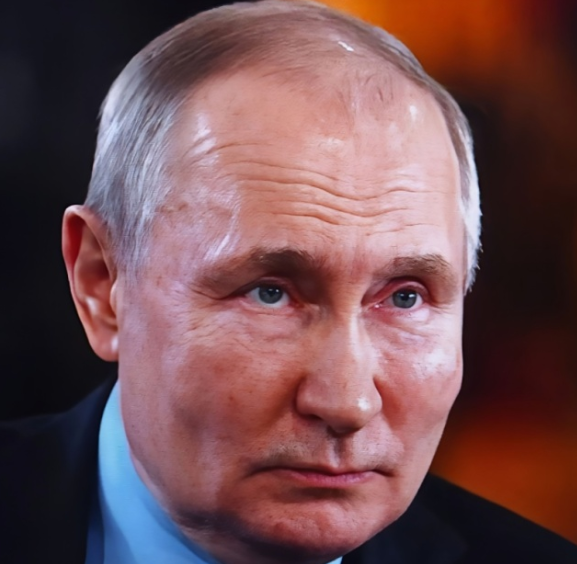It’s Time to Confiscate Russia’s Frozen Assets

The potential downsides to seizing sovereign Russian assets no longer hold much water.
President Trump is right—the war in Ukraine needs to end. He has gone the extra mile by going to Alaska to try to secure a peace deal. He has pushed the Ukrainians and the Europeans, and they have responded positively. Russia continues to be the holdup. As Defense Secretary Pete Hegseth recently warned, if the war does not reach peace soon, “Then the United States, along with our allies, will take the steps necessary to impose costs on Russia for its continued aggression.”

The Trump administration has taken additional steps to impose costs through the latest sanctions on Russia’s two largest oil companies, Rosneft and Lukoil. The Europeans will likely follow suit.
The next area where the United States and its allies could “impose costs” is Russia’s frozen central bank assets. The debate over what to do with the $300 billion in Russian central bank assets frozen in Western banks is reaching a critical moment. There are moral, strategic, and economic imperatives to making Moscow pay for its aggression, along with risks.
Most of the frozen assets are in Europe. Estimates vary, but the conservative estimate of Russia’s frozen central bank assets in the United States is $5 billion, while about $200 billion sits in Belgium. For perspective, Belgium’s GDP is about $650 billion, so it is a bigger deal for Belgium than for the United States.
The assets are currently immobilized in G7 countries, plus Belgium (in Euroclear). Confiscating these assets would be another one of the options that “aren’t off the table,” as Vice President JD Vance has suggested in the past. The assets, currently immobilized in countries like Belgium and France, are largely held through private companies such as Euroclear.
There are several criticisms of the confiscation strategy. First, confiscating these funds could set a dangerous precedent, undermining the trust that makes the US dollar, the euro, and Western financial institutions at large the steel frame of the global economy. Ministries of finance and central bankers fear that seizing Russian Central Bank assets held in Western financial institutions would discourage foreign governments—like China and other major reserve holders—from holding dollar or euro-denominated assets or storing assets in Western banks. The counterargument is that China has few other investment options for its assets.
Second, there are legal impediments to be addressed. Much of the money is housed in businesses like Euroclear, raising questions about jurisdiction and legal process.
Third, there is the argument that Russia could seize American or European corporate assets in Russia, including corporate bank accounts, investments in state-owned enterprises, or property holdings. However, according to Reuters, by 2024, Western firms had written off more than $107 billion in investments in Russia. In addition, Russia is planning to liquidate Western assets in the country anyway.
Despite these complications, political momentum within the G7 is growing in favor of the seizure of Russian sovereign assets. In the US Congress, the REPO for Ukrainians Implementation Act passed the Senate Foreign Relations Committee with strong bipartisan support on October 22, and the House Financial Services Committee reported out the PEACE Act on July 22.
Discussions among G7 members about seizing Russian sovereign assets have been ongoing for more than two years. The Biden administration ultimately decided not to proceed with seizing Russian assets, despite the authority granted to the president by the 2023 REPO Act. This delay was a mistake.
But President Trump now has an opportunity to lead on this issue and, in doing so, press European allies to share a greater burden. To succeed, the United States must make it clear to our G7 allies that it is prepared to lead in confiscating Russian sovereign assets. It must also emphasize that it expects all G7 countries to act with us, just as President Trump has challenged Europe to join in oil sanctions. With broad coalition support, confiscating the assets can transform a symbolic freeze into real consequences for Russia’s belligerence.
Confiscating frozen Russian sovereign assets by all the G7 democracies would be the next option on the table to impose costs on Russia. This step needs to be thought through to ensure that all other G7 nations follow America’s lead. This step would show that aggression has a price. If the Trump administration were to say, “We will confiscate these assets if Europe confiscates these assets,” Europe would likely be pressured into following suit.
- Questions and Answers
- Opinion
- Motivational and Inspiring Story
- Technology
- Live and Let live
- Focus
- Geopolitics
- Military-Arms/Equipment
- Ασφάλεια
- Economy
- Beasts of Nations
- Machine Tools-The “Mother Industry”
- Art
- Causes
- Crafts
- Dance
- Drinks
- Film/Movie
- Fitness
- Food
- Παιχνίδια
- Gardening
- Health
- Κεντρική Σελίδα
- Literature
- Music
- Networking
- άλλο
- Party
- Religion
- Shopping
- Sports
- Theater
- Health and Wellness
- News
- Culture

